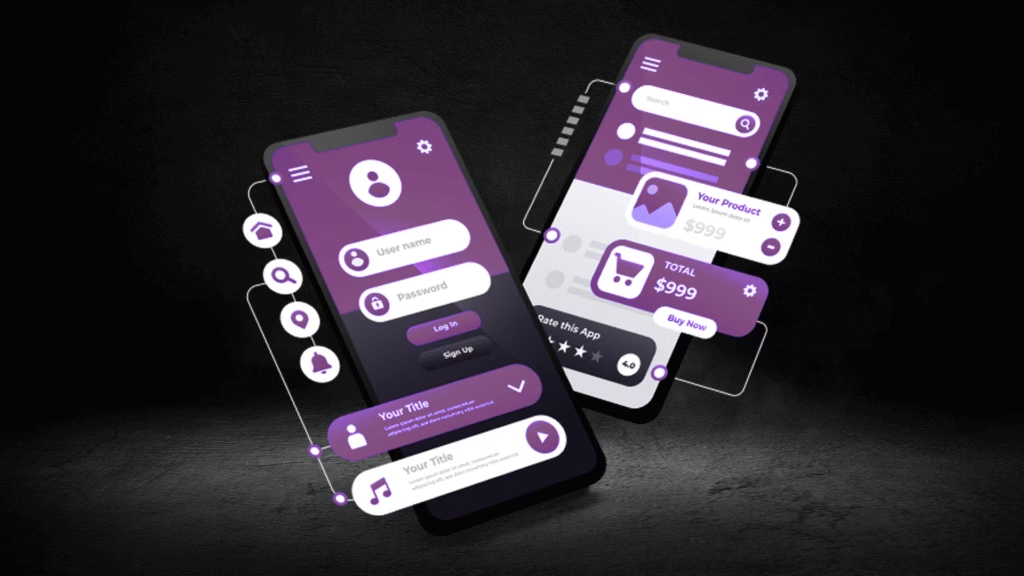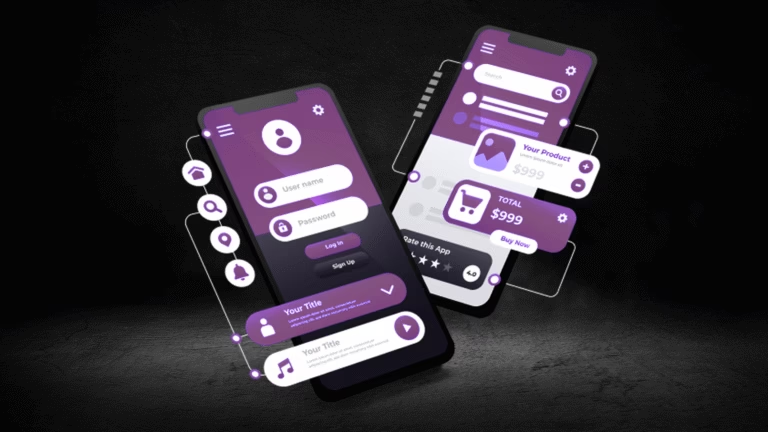Introduction to App Development Trends
In the ever-evolving landscape of technology, staying informed about current app development trends is crucial for developers, businesses, and consumers alike. With the rapid pace of technological advancements, each year brings forth new methodologies and innovations that can significantly impact the development cycle, user experience, and overall functionality of mobile applications. Understanding these trends is not merely a matter of preference; it is essential for maintaining competitiveness in the marketplace.
Emerging trends in app development serve as a guide for what to expect in the near future. They help developers to adapt their strategies, implement new technologies, and enhance user engagement. For instance, the rise of artificial intelligence and machine learning significantly influences how applications are designed, leading to more personalized user experiences. Such trends suggest a shift towards automation and efficiency, making apps smarter and more intuitive.
Moreover, consumer expectations are continuously changing, driven by advancements in technology and innovative features. Therefore, developers must be agile and responsive to these changes. Trends such as the integration of augmented reality, improved security protocols, and the shift towards cross-platform development are prime examples of how app development is expected to evolve by 2025. These shifts not only enhance the user experience but also redefine how developers approach the design and functionalities of their applications.
In conclusion, keeping abreast of app development trends is vital for stakeholders across the board. By understanding current and anticipated trends, one can effectively strategize for the future, ensuring that applications not only meet the needs of users but also leverage the latest technological advancements to provide superior offerings in a competitive landscape.
Artificial Intelligence and Machine Learning Integration
As we look towards 2025, one of the most significant app development trends is the integration of Artificial Intelligence (AI) and Machine Learning (ML) into mobile applications. These technologies are fundamentally transforming the way users interact with software, creating more intuitive, efficient, and personalized experiences. By leveraging AI and ML, developers are increasingly able to deliver tailored content that meets the specific needs of individual users, thus enhancing user engagement and satisfaction.
Personalization is at the forefront of this integration. Apps that utilize AI can analyze extensive volumes of data to understand user behavior and preferences. For instance, streaming services like Netflix and Spotify employ machine learning algorithms to recommend movies, shows, or songs, significantly improving user satisfaction by serving content that aligns with individual tastes. As these algorithms evolve, expect even more nuanced recommendations based on adapting user preferences over time.
Moreover, the role of AI in customer support is rapidly expanding. Applications are now deploying chatbots and virtual assistants powered by machine learning to provide automated support. These systems can learn from previous interactions, enabling them to resolve issues more effectively and efficiently. Companies like Zendesk are already implementing such features, illustrating the practicality of AI in enhancing customer relationship management.
Predictive analytics is another area where AI and ML are making a marked impact. By analyzing historical data trends, applications can forecast future behaviors and outcomes, allowing businesses to make more informed decisions. This capability can be particularly advantageous in sectors such as e-commerce and finance, where understanding market dynamics is critical.
As we progress toward 2025, it is evident that the integration of AI and ML will continue to evolve, establishing itself as a cornerstone of innovative app development trends. These technologies promise to deliver even more advanced capabilities, enhancing user experience and functionality in ways that we have yet to fully comprehend.
Augmented Reality (AR) and Virtual Reality (VR) Adoption
As we progress into 2025, augmented reality (AR) and virtual reality (VR) are anticipated to play a pivotal role in transforming the landscape of app development. These immersive technologies are not merely enhancing user interaction; they are revolutionizing entire sectors, particularly gaming, e-commerce, and education. The convergence of AR and VR with mobile and web applications enables developers to create more engaging experiences that capture users’ imagination.
In the gaming industry, the incorporation of AR and VR technologies allows for richer narratives and immersive environments. Gamers can experience a new level of interaction, where virtual elements blend seamlessly with the real world. This trend is projected to continue growing, demanding advanced app development methodologies that prioritize accessibility and user experience. As hardware capabilities improve, developers are expected to leverage these innovations in their applications more effectively.
In the realm of e-commerce, AR offers users the opportunity to try products virtually before making a purchase, thus enhancing the shopping experience. Retailers are increasingly utilizing AR apps to showcase their products, allowing customers to visualize how items will fit into their environments. This trend is expected to expand, requiring developers to stay ahead of emerging tools and frameworks that facilitate these experiences, simplifying integration for brands seeking to enhance their market presence.
Education is another sector where AR and VR are gaining traction. By integrating these technologies into apps, educators can create interactive learning experiences that make complex concepts more digestible. Simulations and virtual classrooms have the potential to broaden access to quality education, particularly in remote areas. As educational app development evolves, developers will need to adopt best practices that prioritize engagement while aligning with pedagogical standards.
Looking ahead, the continued growth of AR and VR technologies presents both opportunities and challenges for app developers. By 2025, advancements in tools and frameworks that support these immersive experiences will be critical, pushing the boundaries of what is possible in app development. With a focus on enhancing user engagement and experience, developers who embrace these trends will be well-positioned to lead the next wave of transformative application solutions.
5G Technology and Its Impact on App Development
The advent of 5G technology is significantly altering the landscape of app development, providing developers with new opportunities to enhance user experiences and functionality. As mobile networks transition to 5G, the speed and reliability of connectivity are poised to improve dramatically. This enhanced bandwidth facilitates the development of apps that can handle more complex processes, such as HD streaming, augmented reality (AR), and real-time data processing, which were previously limited by the constraints of 4G technology.
One of the most notable advantages of 5G networks is the reduction in latency, which enables app developers to create applications that respond almost instantaneously to user commands. In sectors such as gaming and e-commerce, this immediacy can significantly improve user engagement and satisfaction. Furthermore, the increased capacity of 5G allows multiple devices to connect without degradation of service, supporting the Internet of Things (IoT) ecosystem where smart devices communicate seamlessly.
For app developers, mastering the utilization of 5G technology is essential to stay competitive in a market that increasingly demands high-performance applications. Leveraging the capabilities of 5G can result in innovative features that make apps not just functional, but immersive. For example, industries such as healthcare are expected to witness a surge in telemedicine apps that provide high-definition video consultations and rapid transfer of patient data, thanks to the improved bandwidth.
In conclusion, the rollout of 5G technology is one of the key app development trends that developers must understand and incorporate into their strategies. By harnessing the benefits of faster and more reliable connectivity, they can create richer applications that meet the evolving needs of users and can capitalize on the changing technological landscape through 2025 and beyond.
Internet of Things (IoT) Integration
The integration of the Internet of Things (IoT) into app development is becoming increasingly critical as the world gravitates towards a more connected environment. With an expanding array of smart devices, ranging from home appliances to wearables, app development trends now heavily emphasize the need for applications that can interact seamlessly with these devices. The primary goal for developers is to enhance user experience by creating applications that harness the capabilities of IoT technology, thereby collecting and processing data in real-time.
However, this integration is not without its challenges. One significant concern is ensuring security across the IoT ecosystem. Developers must navigate complexities related to data privacy, device interoperability, and secure communication channels. As more devices are connected, the potential vulnerabilities also increase, making it imperative for developers to prioritize secure app development practices. Moreover, the varying standards and protocols among different IoT devices can lead to compatibility issues, further complicating the development process.
The future of IoT apps appears promising, with several industries set to benefit from their advancement. In sectors such as healthcare, smart home technology, and manufacturing, the integration of IoT within applications can lead to improved efficiency, real-time monitoring, and enhanced decision-making capabilities. As businesses recognize the value of real-time data collected from connected devices, demand for customized IoT applications is likely to grow. Consequently, app developers will need to stay ahead of these app development trends, adapting their strategies and tools to meet the evolving requirements of the IoT landscape.
Cross-Platform Development Tools
In recent years, the landscape of app development has evolved significantly, with cross-platform development tools gaining prominence. These frameworks enable developers to create applications that function seamlessly across various operating systems, such as iOS, Android, and web platforms. This approach offers numerous advantages, particularly in terms of efficiency, cost-effectiveness, and resource management, making it an increasingly preferred choice among organizations and developers alike. As we move towards 2025, the trend towards cross-platform development is expected to expand even further, driven by advancements in technology and user demands.
One of the key benefits of utilizing cross-platform development tools is the significant reduction in development costs. By allowing a single codebase to be used for multiple platforms, companies can save on the resources and time typically required to develop separate native applications for each operating system. This streamlined process not only enhances productivity but also allows for consistent app performance and user experience across devices. As a result, many organizations are prioritizing cross-platform solutions as they seek to optimize their app development strategies.
Moreover, the development landscape is anticipated to witness advancements in cross-platform capabilities leading up to 2025. For instance, frameworks such as Flutter and React Native are continually evolving, offering developers increased access to native features and improved performance integration. Additionally, emerging technologies like artificial intelligence and machine learning are expected to be incorporated into these tools, further enhancing their capabilities and allowing for the creation of more intelligent applications. With the ongoing innovations and emphasis on efficiency in app development, it is evident that cross-platform development tools will play a pivotal role in shaping the future of app development trends.
Focus on User Experience (UX) Design
In the rapidly evolving field of app development, prioritizing user experience (UX) design has emerged as a fundamental trend that shapes not only individual applications but also the broader industry landscape. As developers increasingly recognize that a seamless and engaging user experience drives higher engagement and satisfaction rates, they are adopting more user-centric approaches. This shift is largely attributed to the growing understanding that users are more likely to continue using an application that meets their needs and enhances their interaction.
One prominent trend in UX design anticipated to gain traction by 2025 is the emphasis on minimalistic interfaces. A clean and uncomplicated design helps users navigate applications more intuitively, reducing cognitive load and enhancing overall functionality. By removing unnecessary elements and focusing on core features, developers can create apps that provide value without overwhelming users. This approach is particularly beneficial in a digital environment where users expect efficiency and clarity.
Additionally, intuitive navigation systems are becoming essential in app development trends. Users prefer applications that allow them to achieve their goals swiftly and without unnecessary clicks or obstacles. Implementing features such as gesture-based controls or voice-assisted navigation will likely experience significant growth, catering to the demand for a more user-friendly interface. As technology advances, the integration of Artificial Intelligence (AI) into UX design practices promises to personalize experiences even further, adapting to user behaviors and preferences in real-time.
Furthermore, accessibility in UX design is gaining importance as developers strive to create inclusive apps that can be efficiently utilized by individuals with varying abilities. The incorporation of accessibility features represents a crucial development trend, ensuring that app functionalities reach a broader audience. Ultimately, a strong focus on UX design in app development not only enhances user satisfaction but also serves as a vital component in fostering long-term user loyalty.
Enhanced Security Features
As we move towards 2025, the app development landscape is witnessing an unprecedented emphasis on security features, driven by the increasing number of data breaches and cyber threats. The need to safeguard user data and ensure privacy has become paramount for developers across various platforms. With the adoption of stricter regulations and users becoming more aware of their data rights, the focus on implementing robust security measures in app development trends is now more vital than ever.
Developers are expected to integrate advanced security features such as biometric authentication, two-factor authentication (2FA), and end-to-end encryption to fortify their applications against potential attacks. Biometric authentication, utilizing fingerprints or facial recognition, not only enhances security but also streamlines the user experience. Furthermore, multi-factor authentication adds an additional layer by requiring users to provide multiple forms of verification before accessing their accounts.
In tandem with these practices, the rise of emerging technologies, particularly artificial intelligence (AI) and machine learning (ML), is shaping the future of app security. These technologies can analyze user behavior patterns to identify anomalies and potential breaches in real time, providing developers with the tools necessary to proactively mitigate risks. Additionally, employing secure coding practices and conducting regular security audits are becoming standard protocols in the app development process, ensuring vulnerabilities are identified and rectified promptly.
The trend toward enhanced security features is not limited to established industries but is permeating emerging markets as well. As users increasingly rely on apps for sensitive transactions—from banking to healthcare—the demand for secure applications will only intensify. Developers who prioritize these security enhancements in their app development methodologies will not only comply with regulations but also foster user trust, establishing a competitive advantage in an ever-evolving digital landscape.
Conclusion and Future Outlook
As we have explored throughout this discussion, the landscape of app development is rapidly evolving, driven by several significant trends. The integration of artificial intelligence (AI) and machine learning into mobile applications allows for enhanced user experiences, personalized content, and smarter functionalities. Additionally, the growing reliance on cloud-based applications signifies a shift toward greater scalability and flexibility, facilitating real-time data access and collaboration across platforms.
Furthermore, with the increasing emphasis on augmented reality (AR) and virtual reality (VR), developers are presented with new opportunities to create immersive apps that redefine user interaction. The trend of low-code and no-code development platforms also stands out, making it easier than ever for individuals without extensive programming knowledge to participate in app creation, thereby democratizing the development process.
Moreover, the importance of app security cannot be overstated as the frequency and sophistication of cyber threats continue to rise. Developers must prioritize secure coding practices and embed robust security features into their applications to protect user data and maintain trust. The trend towards progressive web applications (PWAs) also signifies a pivotal shift, enabling users to access app-like experiences directly through a web browser, thus minimizing the need for downloads.
Looking ahead, it is evident that staying informed and adaptable will be crucial for developers aiming to leverage these app development trends. The technology environment is continuously changing, and those who remain proactive in updating their skills and methodologies will be better positioned to remain competitive. By embracing innovation and anticipating user needs, developers can create cutting-edge applications that not only meet contemporary demands but also set the stage for future advancements in the industry. Ultimately, the key to success in this dynamic field lies in one’s ability to navigate change effectively and respond to evolving market expectations.









